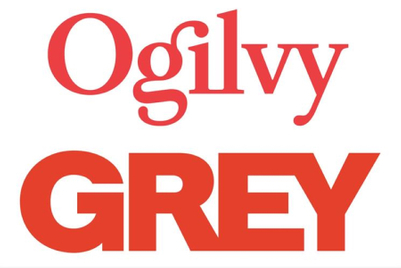
When Sony brought out the Walkman in 1979, 'Brand Japan' found its definitive manifestation. Japan was simply the future—both dystopian and utopian. Product after product strengthened this view—the TVs, the CDs, the cars. The machines became symbolic of a nation that worked like clockwork, with perfect in-sync cooperation at the cost of individual expression.
But all these images of high technology have become rusty in the last decade. The iPhone has killed the domestic smartphone makers and the Xbox has displaced the PlayStation and Nintendo consoles. As Japan’s national branding is so strongly tied to the products it makes, Japan itself has seemingly fallen off the radar. The endless, repetitive reports of aging Japan, overworked Japan, sexless Japan and Fukushima Japan all serve to reinforce this sense of a country whose glory is well in the past.
This all feels strangely surreal considering that Japan remains the third largest economy in the world; its annual GDP is closing in on $5 trillion a year and it is sitting on private financial assets of $14.6 trillion. Japan can boast many intangible strengths too—from world-class infrastructure to the world’s safest metropolis, jam-packed with Michelin-starred restaurants—Japan has many things to boast about, yet Brand Japan fails to effectively market itself abroad.
Japan can take a lesson out of Brand France’s playbook. France is a place of dreams—the embodiment of “joie de vivre”. Paris is so deeply entrenched in our public consciousness as a place of pretty cafes filled with delicious cakes and macaroons, cobblestone paths, music lightly wafting in the air… all framed in a golden glow. Yet, the reality of Paris can be a letdown. Japan has even gone so far as to coin a word for the immense disappointment that overcomes some Japanese tourists when they visit Paris and witness the litter and suboptimal service: the Paris Syndrome (or Pari-sho).
Yet the brand of France remains untainted. So strong is its visual language evocative of emotions, that we all crave on a visceral level. Brand France owns a certain feeling or a mode. To those who long for romance and indulgence, France is an aphrodisiac.
What prevents Japan from having a similarly strong brand? In my opinion, Japan lacks an emotional dimension to the space it creates. Brand Japan has spent too much time on awareness by building on a long back-catalogue of image tropes, rather than finding and defining what kind of emotional state Japan embodies.
Firstly, Japan markets itself like it markets all things—product first. Advertising in Japan still feels strangely trapped in a 1960s Mad Men world of products held to the camera by celebrities stating how good they are. TV commercials further cement such an advertising structure with 15-second slots that mean brands have no choice but to concentrate on product benefits rather than telling an enticing brand story. Brand relationships are simple: you like the product, you like the brand.
When this branding approach is applied to national branding, however, it doesn’t work. Japan sells itself via a commodification of key images that are considered quintessentially Japanese: Mt. Fuji, Samurai and Geisha. While these images are differentiating, they have become old and overused.
In contrast, France has chosen to focus on emotional branding. Its brand is a mode, speaking of always-relevant emotional spaces of love, passion and indulgence. These don't tire or go out of fashion. Instead they morph and develop as needed. The new Air France campaign ‘France is in the Air’ is an example: a French take on ease with a bit of romance thrown in for good measure. Joie de vivre at its best!
Essentially you ‘feel’ France, whereas you just ‘see’ Japan. France embodies certain emotional needs in a fascinating way. If you want to feel love, go to France. If you want to feel indulged, go to France. If you want to feel chic, go to France.
Japan clearly knows that it needs to find a new angle. ANA asked if Japan is cool (first video below) and the Japanese Tourism Agency asked in its ad campaign ‘Do you really know the people of Japan?’ (second video below).
In both cases, we are seeing the traditional Japanese branding solution: hold it to the camera, point at it and tell the viewer what it is. This approach breaks Japan into a series of standalone “products,” rather than linking these images together to occupy a larger, more relevant, aspirational and emotional space.
What larger emotional space could Brand Japan own? I believe a new Japan is emerging in the coffee shops, arts spaces, and retail environments that might carry the answer. As marketers are searching for what they believe foreigners want from Japan, they should look first at what is happening on their own doorstep.
Contemporary Japan is exploring a new take on Japan that manages to feel Japanese without necessarily looking Japanese. These new spaces and ideas are born amongst a younger generation of Japanese, who are seeking to do things differently from their salarymen fathers and housewife mothers. They watched the excesses of the economic bubble period, struggled in a system that emphasizes homogeneity at the expense of the individual, and witnessed numerous corporate scandals routed in murky and greedy company practices. With such a background, they are now building a new mode based on community, simplicity and honesty.
These new spaces that are springing up share this ethos in form and function—when something looks like wood, it is wood. You don't have to look far to find examples. Spaces designed by architects like Sanaa leave the material bare without decoration. Packaging design for brands like Sutamina Miso show the product with a simple white wrap-around with only the essential information. The select shop D&Department or the cosmetic brand THREE showcases products in a white space without excess clutter, cherishing each product as a piece of art worth a moment of thought.

These examples illustrate a common lightness: reductionist, quiet, timeless and yet focused. This aesthetic is quintessentially Japanese. It is concentrated perfectionism devoid of ego. It is perfection for the sake of perfectionism.
In a world that has been driven by speed and optimization, there is something immensely appealing, if not gratifying about brands that share a mindset of hitting the brakes and letting you savor the moment. We are witnessing a global trend toward less consumption, but more contemplative consumption—reducing physical impact but increasing emotional ties.
This is fertile ground for Japan to build its new national brand. It's time to go beyond Japan as product and instead build a story around the emotional value Japan brings: reflection and rediscovery of the things lost in the global rat race.
Go to France to love and indulge, come to Japan to concentrate and reflect.
Sven Palys is project director at Flamingo Tokyo



.jpg&h=268&w=401&q=100&v=20250320&c=1)


.jpg&h=268&w=401&q=100&v=20250320&c=1)

.jpg&h=268&w=401&q=100&v=20250320&c=1)

